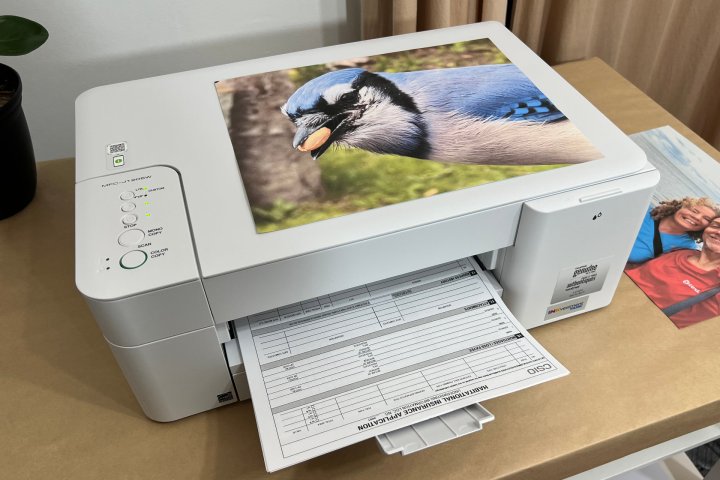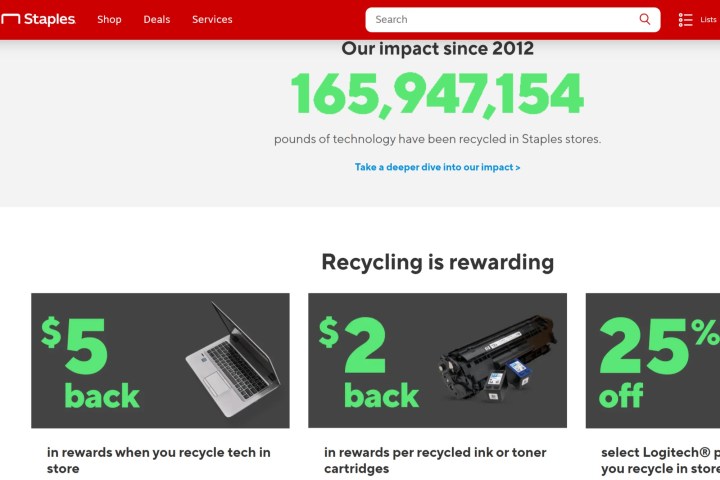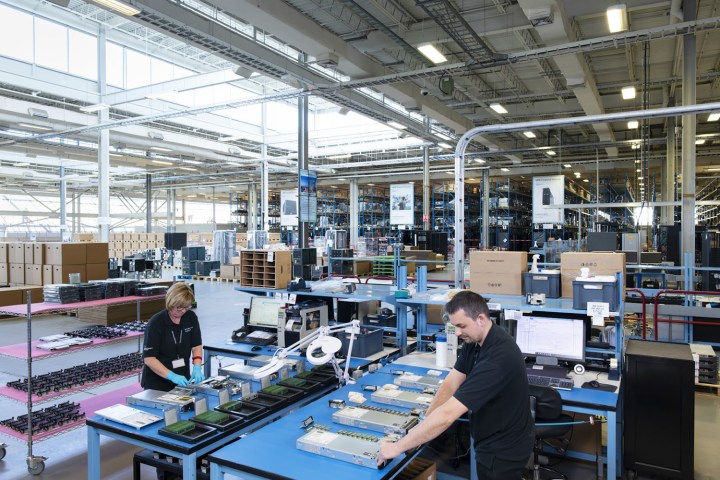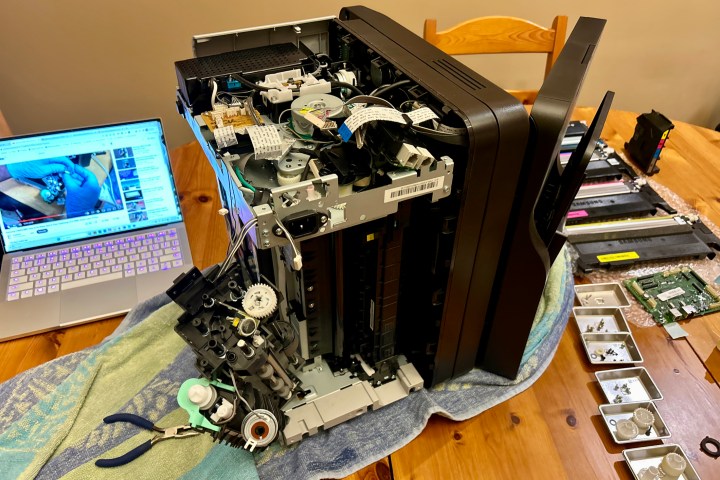Printers are complicated machines featuring a mix of plastics, metals, electronics, and components, some of which are potentially flagged as hazardous waste. In 2023, it’s more important than ever to be kind to the planet, and there are several environmentally safe ways to dispose of a printer.
Even the best printers in the world can reach the end of their life after several years if ink or toner is no longer available. A well-loved printer can suffer from accumulated wear and tear or damage from a catastrophic power surge that’s too expensive to repair.
A printer doesn’t have to be unusable to get rid of it. Suppose you upgrade to a more economical tank printer or move from a monochrome to a color laser printer. Whatever the reason, here are several ways to dispose of a printer in an environmentally friendly way.
Gift, donate, or sell a working printer

If your printer still works, you can give it to a friend or family member. Reusing electronics is the best way to get the full value of the device, and printers are one of the easiest tech products to regift. Social media is a good place to ask if anyone needs a printer.
To avoid any issues, it’s best to provide disclaimers about any problems with the printer, and if it needs ink or toner, share that information as well. If you offer a “free” printer that’s completely out of ink, you might get complaints about omitting that detail.
A local charity — like Free Geek near our headquarters in Portland, Oregon — might accept a printer. And hey, if you get a receipt, you can even write that off on your taxes. Note that the exemption is based on fair market value, not the original cost of the printer.
You can also offer your printer for free online. While small printers are easy to ship, it’s best to find someone local to reduce the expense and greenhouse gases generated from unnecessary travel.
Freecycle is a nonprofit organization devoted to keeping usable products out of the landfill. The Buy Nothing Project is similar, letting you list free items and search for things you might want.
If you’re disposing of an expensive printer, you might want to recover some of its value by selling it. Craigslist or Facebook Marketplace are good options for local classifieds, and there’s no fee to list your printer for sale or offer it for free.
Recycling a dead printer

Printers usually don’t have lithium batteries, but ink and toner may contain other heavy metals and chemicals that can contaminate groundwater. Wind can pick up the fine particles in toner and disperse that waste anywhere. It’s important to recycle ink and toner cartridges, as well as dispose of the rest of the printer properly.
For many years, people threw damaged and old electronics in the trash, and they ended up in landfills, creating a hazardous waste problem. Thankfully, recycling provides the answer for dead printers.
However, you can’t dump a printer in a recycling bin since it’s made of several types of materials. Even if you disassemble your old printer into its metal and plastic components, most parts are unacceptable for residential recycling programs.
Many areas have e-waste recycling programs to help solve this problem. Sometimes, there are community recycling events of one or more days when you can drop off your used electronics and batteries for recycling and safe disposal. Check with your local government or waste disposal provider to find out when and where to recycle printers.
Some electronics and office stores accept old printers and printer cartridges. For example, BestBuy and Staples recycle printers for free. Ask your local stores if they have an electronics recycling program that accepts printers or cartridges.
Manufacturer recycling

In addition to third-party solutions, most major manufacturers have a printer recycling program. You can check the websites for HP, Epson, Brother, and Canon for specific instructions.
The manufacturer pays for shipping, but you must box up the printer and follow specific rules to qualify for free recycling. While this method helps avoid e-waste, shipping an unwanted printer back isn’t the most environmentally friendly choice because delivery vehicles use energy and often create carbon.
Reuse the parts

A final option is to keep a dead printer and reuse the parts to repair a similar model. Unfortunately, parts are rarely interchangeable. You would need two printers from the same manufacturer and within the same family.
Manufacturers may refresh an older printer design with new features and give the new product a similar model number. This probably isn’t worth the effort unless you have experience refurbishing electronics.
If you happen to have two unusable printers of the same type, you’d still need to diagnose what’s wrong, and then remove and replace the correct part to get one working again. That’s quite a bit of work, so it’s only worthwhile if these are expensive printers.
Keep your printer working
If you use your printer frequently, you should consider a durable small business printer designed to last a long time. Products designed to handle a bigger workload might cost more initially, but often last long enough to be worth the added expense.
It’s worth noting that laser printers are usually more rugged than inkjet printers, but that isn’t always the case. Our printer buying guide can help you decide which type of printer is best for you.


